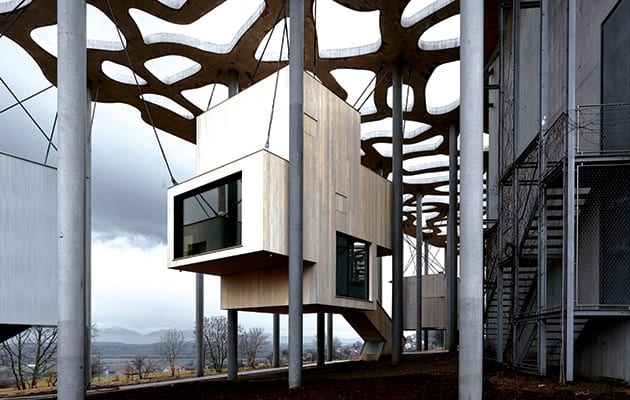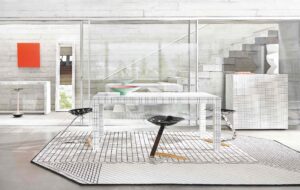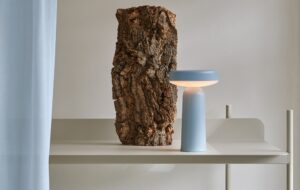 |||
|||
We are all aware of the inconsistencies that lie at the heart of where a writer chooses to position themselves during the creative process. It’s a guessing game, really, that depends on fluctuating moods or the varying surroundings of the typical working environment.
One practice that has taken on the demanding challenge of designing a space for a writer is Rintala Eggertsson Architects, a Norwegian architecture firm founded by Sami Rintala and Dagur Eggertsson. The result is its magnificent floating writers’ cabins, titled In Praise Of Shadows, which have been installed as part of a writers’ residency programme at the Fondation Jan Michalski’s Maison de l’Écriture literature institute in Montricher, Switzerland.
The design competition saw 16 international architecture practices submit proposals for the new writing quarters, and Rintala Eggertsson’s design was one of six winners selected to be built.
 Stairs lead from the functional areas up to the workspace
Stairs lead from the functional areas up to the workspace
In terms of the brief and overall concept, Eggertsson explains its simplicity: “The writer needed a bathroom, small kitchen, living room with sleeping possibilities and a writing room,” he says. “We all know how the mix of different functions can take your attention away from what you are doing, which is what we wanted to avoid. Our approach was instead to separate these basic functions as much as possible in order to provide the residents with focus on their work.”
Having designed the cabins free of any major influences – purely down to the fact that there are very few writers’ cabins out there, making the project somewhat of a rarity – the team was able to approach the brief with a level of liberty, but also with some direction.
“The decision to suspend the residences for the writers came from the Fondation Jan Michalski and the director Vera Michalski,” says Eggertsson. “She wanted to aspire to freedom from daily lives and routines by establishing a sense of independence from the ground we walk on.”
 The distant landscape offers visual inspiration to occupants
The distant landscape offers visual inspiration to occupants
He continues: “One could compare the cabins in Montricher to tree houses, where the laws of gravity follow a different logic than one is normally used to. This helps to establish a sense of detachment, or independence, which is necessary for creative people to submerge into their work for days and weeks at a time.”
Each cabin has been constructed via a structural hierarchy: the functional basic amenities are at the bottom – like the water and heating systems, plus the kitchen and bathroom – with the writing room at the top.
Allowing both privacy and daylight, the setting is a somewhat idyllic situation for the author – with the Swiss landscape playing a central role. As Eggertsson explains: “When working with small spaces, one needs to create a sense of space by establishing visual axes towards the larger surroundings.
“The landscape was always the additional space we could connect with. The grassy fields where the cows are grazing in front of the kitchen, the common space below the large concrete canopy in front of the living room and the mountain range, with Mont Blanc at a distance, helps to establish mental connections far beyond the small spaces of the cabin.”
Subscribe to OnOffice for more offbeat spaces here.
Writers seeking creative isolation can find their inspiration in Ritala Eggertson’s purpose-designed suspended cabins




















